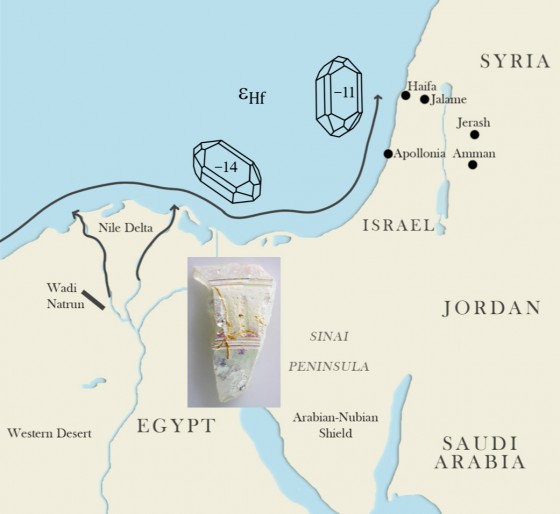
New method solves old mystery
For a long time, it was not possible to establish the precise origin of high-grade transparent glass from imperial Rome (3rd century CE) – glass which was used for example for vessels and as window glass. Historical sources strongly suggested that the glass originated in Egypt – on the basis of the term “Alexandrian” found in these sources – but this could not so far be confirmed. By contrast, there was much to indicate that the centre of glass production in late antiquity was Palestine, where a large number of furnaces have been excavated. The mystery surrounding the clear Roman glass has, however, now been solved: “Alexandrian” does indeed refer to production near the Nile in Egypt. This is the result of a study using a new geochemical isotope analysis.

The starting point for the work undertaken was glass found in the Jerash Northwest Quarter Project, a German-Danish collaboration. Since 2011, excavations have been taking place around this Jordanian town in which Achim Lichtenberger has been involved. He and his Danish colleague Prof. Rubina Raja from the University of Aarhus – she is also Director of the Centre for Urban Network Evolutions (UrbNet) – are joint leaders of the archaeological project surrounding the excavation site in Jerash.
The geochemical analysis was developed by Dr. Gry Barfod from UrbNet in Aarhus. The new method can be used in future to ascertain where exactly finds of this transparent glass from imperial Rome come from. The key to solving the mystery was the sand used in the production of the glass. Hafnium isotopes contained in it were used in the geochemical processes to produce a kind of fingerprint of the sand. “Hafnium isotopes have proven their value as important tracers for establishing the origin of sediment deposits. As a result, we can now distinguish quite clearly between Egyptian and Palestinian glass,” says Barfod.
Hafnium isotopes had not previously been used in archaeology for studying trade in antique times with synthetic materials such as ceramics and glass. As co-author Prof. Ian Freestone from University College, London, comments: “These exciting results clearly show the potential which hafnium isotopes have in establishing the origins of materials from antiquity. I am certain that they will become an important feature of our scientific resources in future,”
Original publication:
Barfod, G.H., Freestone, I., Lesher, C.E., Lichtenberger, A. & Raja, R. 'Alexandrian' (2020): Glass Confirmed by Hafnium Isotopes. Scientific Reports; https://doi.org/10.1038/s41598-020-68089-w
